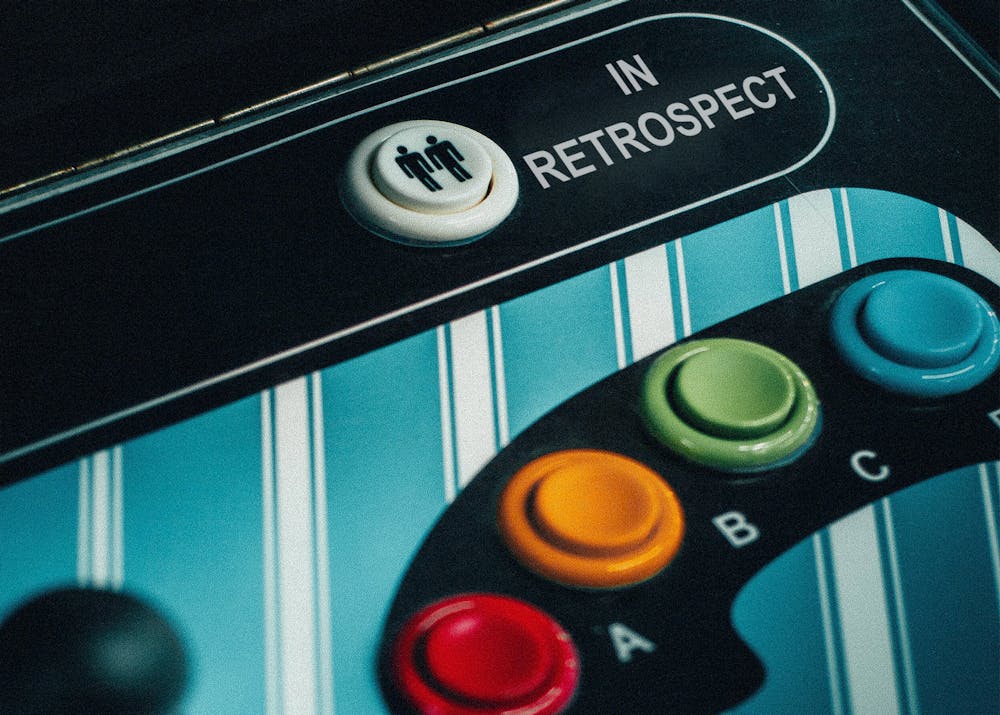I don’t watch too many cartoons anymore. Don’t get me wrong, I’m not saying I outgrew cartoons — animation is a medium, not a genre, and there are plenty of animations to enjoy as an adult. I’m just saying that I haven’t been able to find cartoons that have commanded my attention. Despite a few exceptions, adult animation seems so bland, and I haven’t been able to vibe with much childrens’ animation, no matter how acclaimed it is. This is a drastic change from who I was growing up, when I spent my waking hours consuming every cartoon I could possibly watch. I’d split my time between 4Kidz, Nickelodeon and Disney Channel, but the king of animation in my eyes was always Cartoon Network. The 2000s belonged to Cartoon Network — between “Adventure Time,” “Foster’s Home for Imaginary Friends” and “Scooby-Doo,” I definitely made time in my day for cartoons. There was, however, one show that topped them all — one TV show that remains ingrained in my mind and had a profound impact on the trajectory of my humor and personality as a kid. That show was “Regular Show.”
“Regular Show” made its debut when I was in fourth grade. I remember watching a commercial for the show on the Cartoon Network website and the only emotion that struck me was pure confusion. Why was there a human-sized bird? Why is he friends with a raccoon? Why do they work for a gumball machine? Why do they coexist in a world with humans? To put it frankly, this show looked weird. Really weird. And that enticed me. The premise itself isn’t unusual — if you generalize it, it’s simply an animated sitcom about two lazy friends who live and work at a park, working for a manager with anger issues as they attempt to navigate their work and their social lives. What makes the show unusual is literally every other thing about it.
I caught the premiere of the first episode and I was absolutely hooked. In retrospect, the first episode of “Regular Show” was profoundly bizarre, to the point where even writing the synopsis is convoluted, but I’ll try. Mordecai (the bird) and Rigby (the raccoon) begin the episode by practicing wrestling moves in their room, ultimately tearing a hole in the wallpaper. Stressed about this, both Mordecai and Rigby scheme to ask their boss, Benson (a gumball machine), for a raise to cover the cost of repairs. How? Only by using a magical keyboard to perform a song for Benson that will hypnotize him to issue them a raise, of course. This plan ultimately works, and Mordecai and Rigby eventually determine that their keyboard will give them anything that they want. Things go awry, however, when Mordecai and Rigby use their keyboard to perform a song for their coworker Skips (a yeti), accidentally teleporting him to the moon. The end of the episode sees them teleporting themselves and Benson to the moon to save Skips, fighting a giant monster on the moon, teleporting back to the park and an aggravated Benson revoking their pay raise. Did you catch all of that?
The plot synopsis of the first episode I described above may seem convoluted, but once you watch enough “Regular Show” episodes, there’s a formula you’ll surely pick up: (1) Mordecai and Rigby want something, (2) they find some sort of solution that may or may not involve magic and (3) something incredibly wild, surreal and insane happens at the end of the episode. “Regular Show” is essentially a sitcom combined with an acid trip. The show made no sense, and yet somehow it made perfect sense to me. Week after week, I’d watch each new episode with my brothers, and I’d go to school the next day and talk about the funniest moments with my friends. My friends and I would come up with our own stories undoubtedly inspired by “Regular Show” and trade them at lunch.
These memories, forever enshrined in the depths of my mind, were inspired by a show about a bird and a raccoon trying to slack off from their job. But the show is really about more than that. It’s a show about two friends navigating their early twenties — navigating work, relationships, friendships, hobbies and more. Despite being an eleven-minute cartoon on Cartoon Network, “Regular Show” still tinkered with its plot structure. Episodes where Mordecai steers his love life read more akin to soap operas. There was an Emmy-winning episode wherein Rigby falls into a coma. The final season takes place in outer space for some reason. There’s just so much unexpected depth to the show that you would not realize from the surface.
Nowadays, it seems like television shows are too afraid to experiment — it really feels like we’ve reached a slump. Not only does there seem to be a lack of creativity in entertainment, but it seems like entertainment executives are afraid of creativity and new ideas. Year after year, the only new television shows seemingly announced are reboots of old series, or shows that lack clear purpose or inspiration. It really grates on me and drives me away from what I used to love. I’m not saying that every show needs to have insane third acts in each episode, or that they need to fight for my attention with crazy premises, but I do think they need to find the fun again. Maybe the solution is to take a cue from animated television and embrace the irregular.
Get The Chronicle straight to your inbox
Sign up for our weekly newsletter. Cancel at any time.

